Market Impact
A major challenge here is simply deciding how to compare the processors to other CPUs from AMD and Intel on the market.
AMD Ryzen Threadripper Pro 3975WX v. AMD
To us, there are three main competitive lines: the AMD EPYC and Threadripper (non-Pro.) While there are other members of the Threadripper Pro family, the 16 core 3955WX is much smaller and the 64 core 3995WX chips are much larger and more expensive so those are a fairly easy decision. Luckily, deciding on competition relative to AMD means we have more straightforward positioning than we thought there was before getting into the exercise.
While the AMD Ryzen series has up to 16 cores, the Threadripper Pro 3975WX has twice as many cores and features such as ECC RDIMM support. The better way to think about the Ryzen competition here is that this part is around two 16-core Ryzen parts. So while the chip and motherboard may be more expensive, one needs fewer system components by consolidating systems 2:1 which helps lessen those costs. Many applications do not scale to multiple machines, so our sense is that there is less competition from the standard Ryzen in this market.
On the EPYC side, we think this is a fairly easy discussion as well. The Threadripper Pro platform allows for higher-TDP 280W parts and clock speeds. To us, a major feature though is the chipset. Since the Threadripper Pro series has the WRX80 chipset, we get bountiful I/O such as 10Gbps USB connectivity but also nice workstation features such as audio out and WiFi. What one does not get here is the new Zen 3 architecture. There are EPYC SKUs that may make good workstation processors, albeit at lower clock speeds, but the challenge is still the Threadripper Pro series has a more workstation-friendly ecosystem around it.
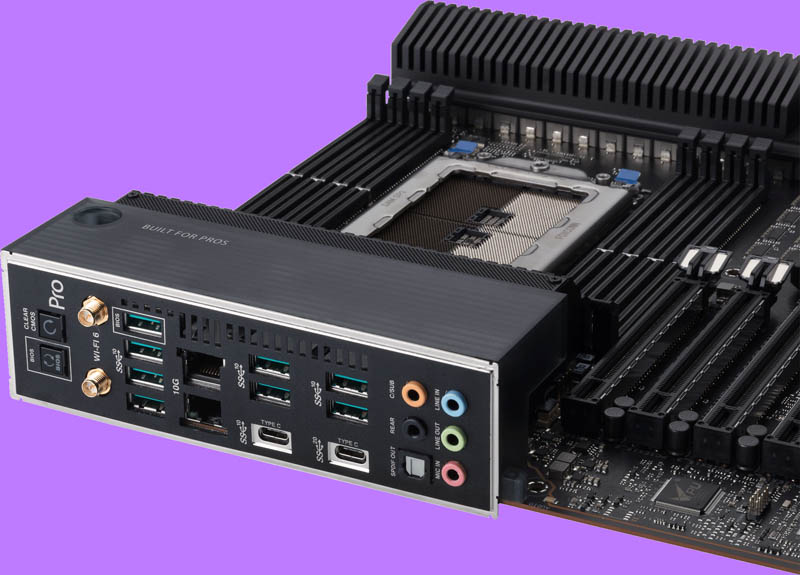
Many of these features can be added to an EPYC platform, but it is usually better to have the chipset to put lower-value I/O onto while keeping the main PCIe lanes free. We did an AMD EPYC 7002 Rome v Threadripper for workstations and some of that gap closes with the Threadripper Pro, but some are still very valid.
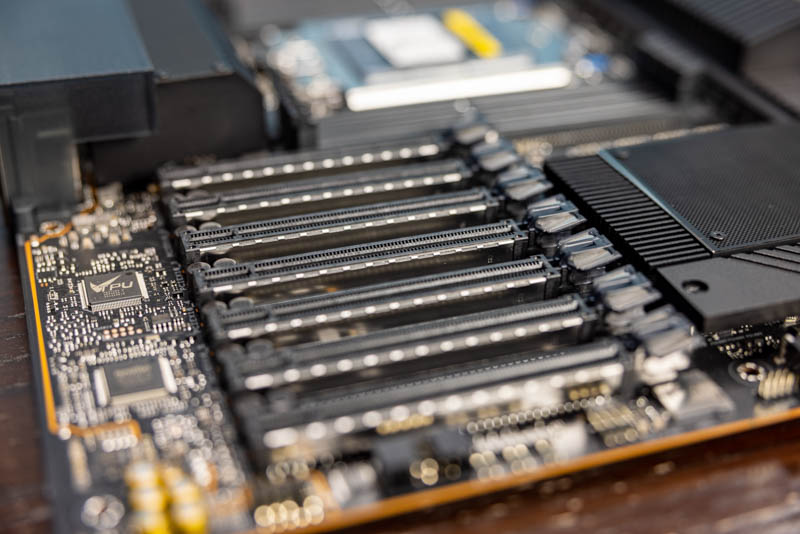
Compared to the AMD Threadripper non-Pro series, we think that the real value proposition is the expanded I/O configuration. Beyond having simply more PCIe lanes, the fact that the Threadripper Pro has ECC RDIMM and LRDIMM support is a big deal.
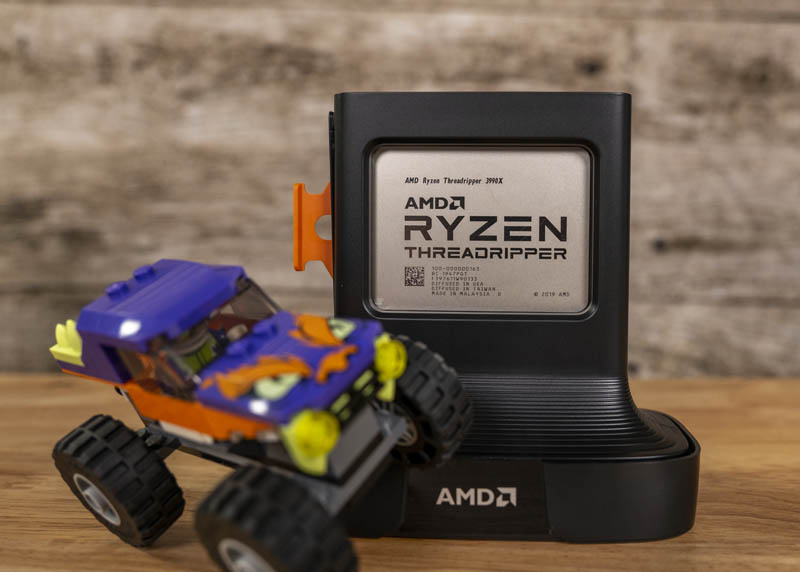
There are many Threadripper users that simply want more memory capacity and full ecosystem support (which is different from “it works”) on a platform. Threadripper Pro offers that upgrade over the standard Threadripper.
We wish that AMD would rationalize products either to make Threadripper just be the Threadripper Pro line or to just open up workstation chipset platforms for EPYC with these higher TDP and frequency SKUs. The Threadripper Pro line is great, but after testing all three lines it feels like users would be served with just two active lines.
AMD Ryzen Threadripper Pro 3975WX v. Intel
This is one where we are simply going to say that Intel needs to refresh its chips. Now that the Intel Xeon Ice Lake Edition is available, Intel only has server chips that would come in competition with this part, except there are a few catches to that statement. The single-socket Xeon platform only has 64x PCIe Gen4 lanes. Ice Lake Xeons also typically carry lower clock speeds at 32 cores and higher. Finally, the availability of the Ice Lake Xeon series is very tight (AMD EPYC 7003 is in the same place as well.) Still, Intel needs to upgrade the Xeon W-3275 to be more competitive with these Threadripper Pro 3975WX parts.
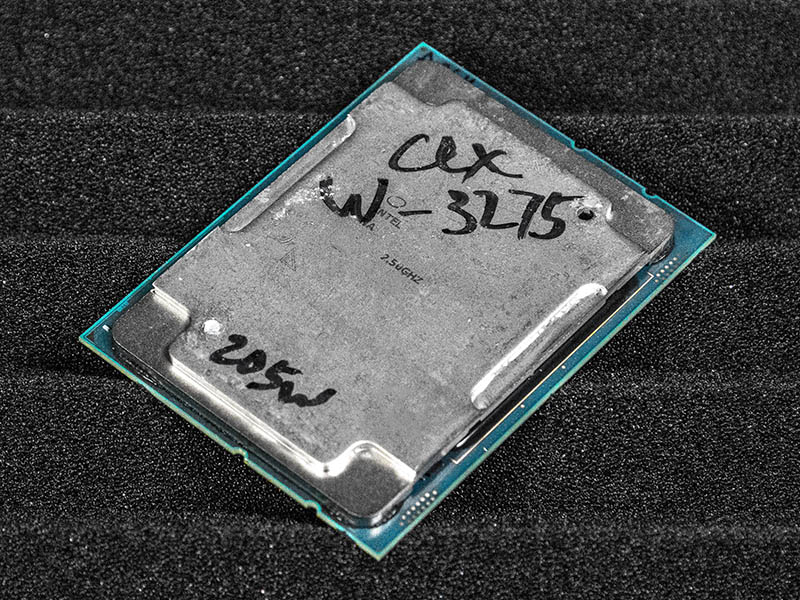
We expect Intel to undertake this refresh, but the global chip shortage and the speed at which 10nm Ice Lake chips arrive, plus the clock speed of those chips, make it seem like Intel needs something different. It would be awesome to see Intel use the high-end workstation segment as a test vehicle for multi-chip packaging products.
Final Words
While the AMD Threadripper Pro series has a number of models, this one may be one of our favorites. The Threadripper Pro 3995WX benefits from simply having a huge core count. The Threadripper Pro 3955WX just seems like a lower-end part to get access to a higher-end platform. The Threadripper Pro 3975WX provides a balance of cost as well as CPU performance and platform features. This may be the most balanced of the bunch of CPUs and one our readers will likely look at.
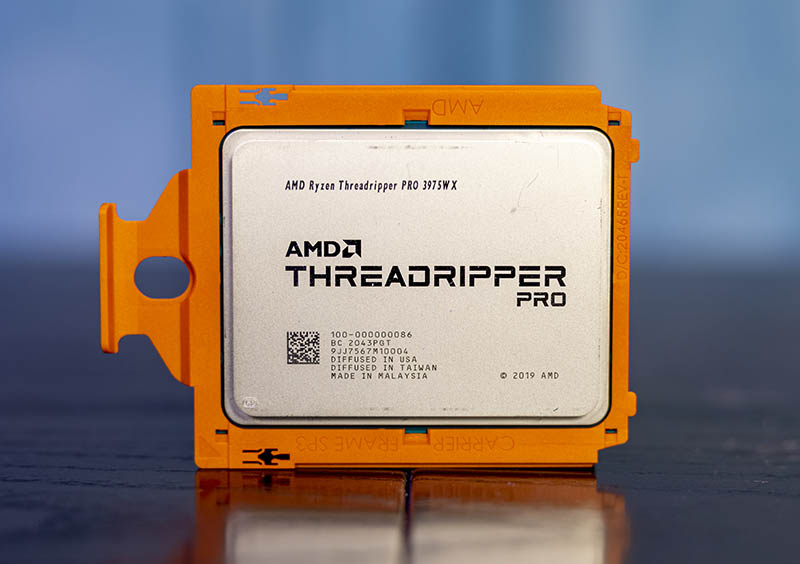
Overall, if you need the I/O of the Threadripper Pro platform and a solid core count but want to have higher bandwidth per core instead of a more expensive and higher-core count 3995WX, the AMD Ryzen Threadripper Pro 3975WX is an excellent solution that many would be proud to have powering their workstations.

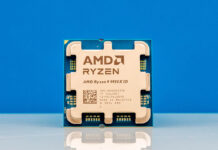


Thank you for the review and including the TR 1950x. Gives a good perspective how much things have improved. (I’m actually still on 1950x, so this really shows how bad i should consider an upgrade)
Second is the future compatibilty with Zen3, wonder if current TR platforms (pro and non-pro) will support them, or will they pull another move and replace the platform?
That Asus board though.. a dream board, and the only one on my list (Gigabyte is second potential pending reviews…)
My understanding is the 3970 has 4 memory channels while the 3975 has 8. I would have expected there are scientific workstation tasks that run much faster with the extra memory bandwidth. At the same time, none of the tests in this review show any benefit.
Were all 8 memory channels active during the testing?
Did you compare with only 4 channels populated to see if there is any difference?
Could you look for a new benchmark that can tell the difference between 4 and 8 channel memory systems?
I disagree entirely about streamlining the product lines. What they need to do is make normal Threadripper processors with fewer than 24 cores as well.
The Ryzen platform has too few PCIe lanes and expansion slots to make a real non-toy computer with. The Threadripper platform fills that need, but the startup cost is too high with the Zen 2 generation. Plenty of people need a platform with reasonable amounts of I/O, but not a huge number of cores.
Making the gap between toy Ryzen computers and Threadripper Pro/EPYC even larger would be an incredibly stupid thing to do.
They need to expand the options, not reduce them.
Again Thanks Patric for the great review
This gentleman “https://www.youtube.com/watch?v=3yOCBL1lvIA” had a memory issue with the ASUS MB, two memory sockets were out of order. I’m planning to order this MB to be shipped to Kuwait on a later stage “once this extreme shortage will be over” & it will be too expensive to ship back & fourth. By the way I trust ASUS products that is why I’m considering it not the competition
Thanks & best regards
@Thanny
[…I disagree entirely about streamlining the product lines. What they need to do is make normal Threadripper processors with fewer than 24 cores as well…]
I understand where you’re coming from with this. I felt the same thing at some point. I was happy with a 2950X (I luckily got it used for $700 mid-2019, now it is at $950 on NewEgg, crazy) and it was a shock to see the 3960X at $1400 MSRP as lowest option. But I went ahead replacing the 2950X with the 3960X. Reason: I was also using a 3900X which was more performing than the 2950X on (mildly) threaded apps. I recycled the 2950X as server. The way I compute the cost is to spread the price on N years. Example: $1400 on 10 years = $12 a month. Yes, I can live with that. Why ten years? Because my previous PCs were from 2008. So null doubt that the 3960X workstation is going to last a long time for enterprise software dev, databases, VMs, etc. I’m not a graphices/creator guy.
[…The Ryzen platform has too few PCIe lanes and expansion slots to make a real non-toy computer with. The Threadripper platform fills that need, but the startup cost is too high with the Zen 2 generation. Plenty of people need a platform with reasonable amounts of I/O, but not a huge number of cores…]
They won’t. If they were to go beyond 24 lanes, they would start to cannibalize their HPC and Epyc markets. INTEL does the exact same thing. Let’s imagine you had a Ryzen 9 5950X with 48 lanes, there would be many “creator” workshops (multi-graphics cards) or small businesses in need of servers with accelerator cards and/or 25/40GbE network jumping on the occasion at the expense of TR and Epyc. AMD does not want to cannibalize its products, it wants to cannibalize INTEL products.
Just putting their shoes on to explain their reason.
In addition, AMD does it because it can: INTEL has currently no answers to AMD TR.